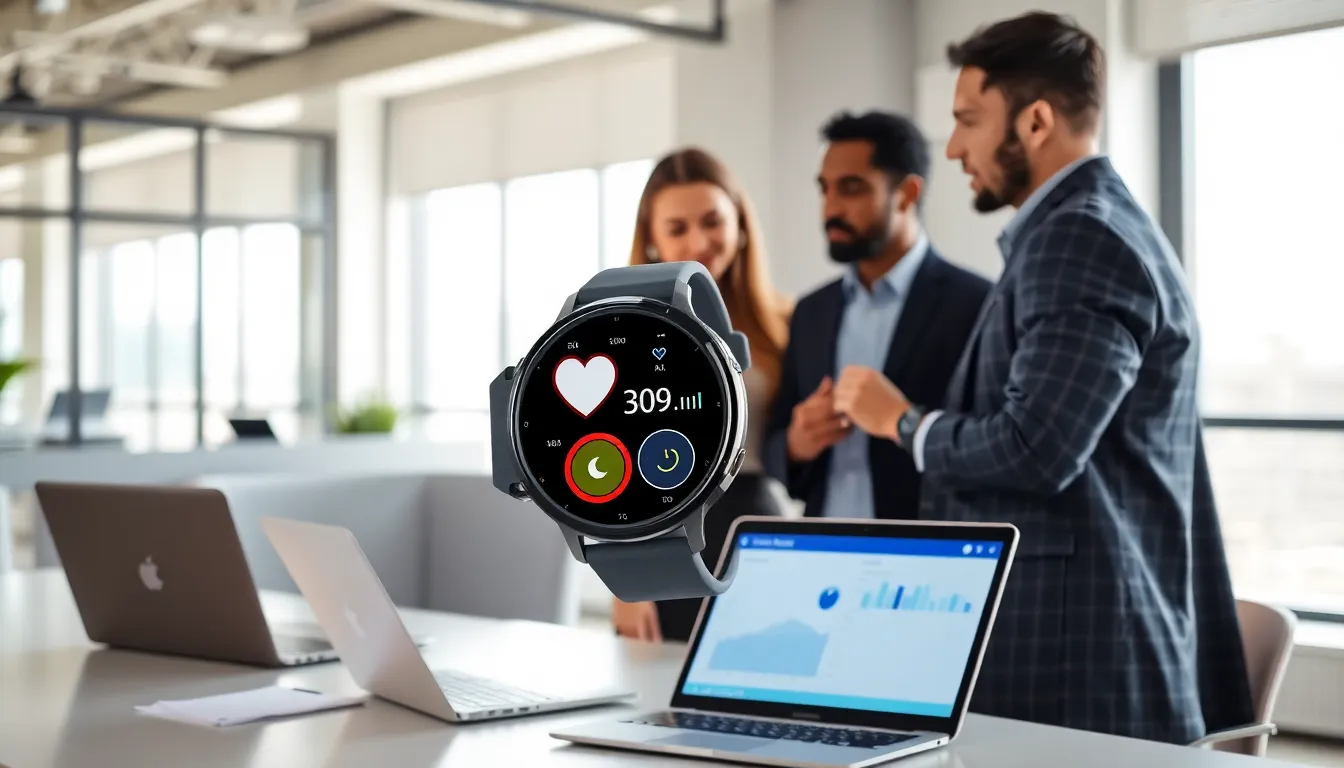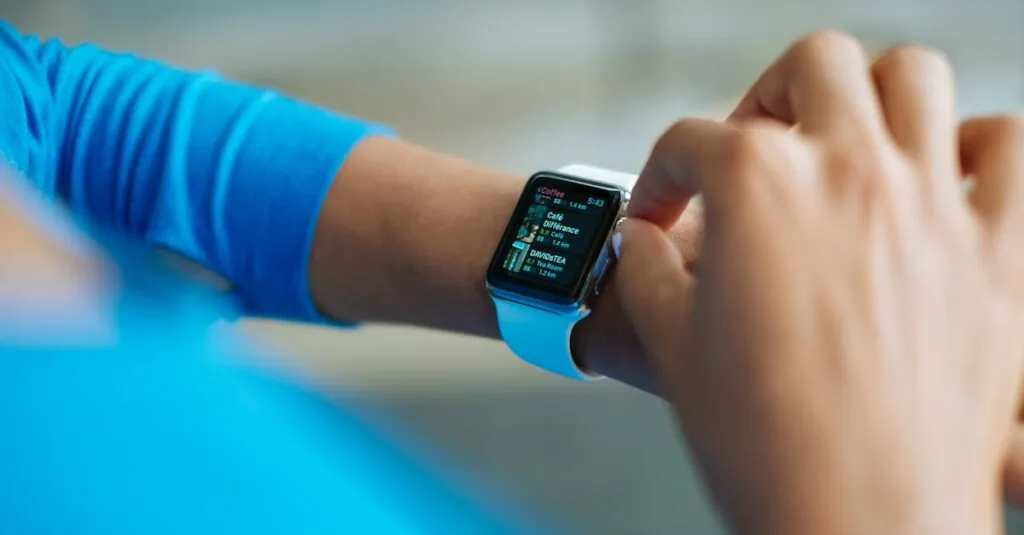In a world where health is gold, biometric wearables are the shiny new coin making some serious noise. They not only keep you connected to your workouts but also bring precision to health monitoring that would make even a doctor raise an eyebrow. Imagine a tiny gadget on your wrist that tracks your heart rate, sleep quality, and even stress levels, all while you’re jamming out to your favorite tunes. Intrigued? Let’s peel back the layers on these revolutionary devices and see why they’re becoming a staple in health and fitness routines everywhere.
Table of Contents
ToggleWhat Are Biometric Wearables?

Biometric wearables are devices equipped with sensors that collect and analyze health-related data. Think of them as health vigilantes, silently monitoring various physiological parameters. Whether it’s heart rate, oxygen saturation, or sleep patterns, these gadgets do the heavy lifting. At their core, biometric wearables aim to give users real-time insights into their health, empowering them to make informed decisions. They come in different shapes and sizes, from smartwatches to fitness trackers, and they often connect to apps that help your users analyze their data further.
It’s like having a personal health coach right on your wrist, without the hefty subscription fees.
Types of Biometric Wearables
Biometric wearables can be broadly categorized into several types, each designed to serve unique purposes.
Smartwatches
These multifunctional devices not only tell time but also track heart rates, monitor sleep, and even provide notifications. Brands like Apple, Fitbit, and Garmin lead the charge, offering features that cater to both fitness enthusiasts and casual users.
Fitness Trackers
More focused than smartwatches, fitness trackers excel in monitoring activities like steps taken, calories burned, and sleep patterns. Devices from companies like Fitbit and Xiaomi have carved a niche in this category by providing comprehensive insights into daily activities without overwhelming features.
Health Monitors
Some wearables are designed specifically for health monitoring. These devices can track critical metrics such as blood pressure, glucose levels, and stress responses. For example, continuous glucose monitors (CGMs) have revolutionized diabetes management by providing real-time blood sugar data.
Smart Clothing
Emerging technology has seen the rise of smart clothing that integrates biometric sensors within clothing fibers. This can track performance metrics in athletes like heart rate, muscle activity, and even body temperature, providing a holistic view of physical performance.
How Biometric Wearables Work
The technology behind biometric wearables combines several elements, including sensors, algorithms, and connectivity features. Typically, these devices use sensors to detect physiological signals. For instance, photoplethysmography (PPG) is a common technique used in wearables, shining a light through the skin to measure blood flow.
Once data is collected, sophisticated algorithms analyze the information to derive meaningful metrics. This can include identifying when someone is stressed based on variations in heart rate variability. Also, modern wearables often sync with apps, allowing users to track their data over time and gain insights into their health trends.
Connectivity is another critical aspect. Bluetooth technology enables real-time data transmission to smartphones or computers, so users can monitor their health metrics at their convenience. The seamless integration of sensors, software, and connectivity makes biometric wearables not just gadgets, but powerful tools for health management.
Key Benefits of Biometric Wearables
The advantages of using biometric wearables extend beyond mere convenience.
- Real-Time Monitoring: Users can track vital health metrics in real time, enabling immediate awareness around health fluctuations.
- Personalized Insights: Biometric wearables use accumulated data to tailor health and activity recommendations, allowing users to optimize their performance.
- Motivation to Stay Active: Many wearables come with gamified features, encouraging users to meet fitness goals. This kind of motivation can make all the difference in a workout routine.
- Early Detection: Continuous monitoring can aid in the early detection of health issues, sometimes before symptoms even appear. For example, irregular heart rates or elevated stress levels can signal the need for medical attention.
- Holistic Health Management: By providing data across multiple health parameters, these devices offer a more comprehensive picture of one’s health, empowering well-informed choice-making.
Challenges and Limitations
While biometric wearables offer significant benefits, they are not without challenges.
Data Privacy: Users often share sensitive health data with apps and manufacturers, raising concerns over data security and privacy.
Accuracy: Not all devices provide the same level of accuracy. Many rely on algorithms that can sometimes misinterpret data, leading to incorrect readings. Understanding the limitations of these devices is crucial for effective use.
Battery Life: Constant monitoring would demand substantial battery life, which can vary significantly between devices. Users may find themselves frequently recharging their gadgets, detracting from their convenience.
User Engagement: Some users might struggle to maintain consistent usage. Engagement levels can fluctuate, especially if the wearable doesn’t offer an intuitive user experience.
The Future of Biometric Wearables
As technology progresses, the potential for biometric wearables continues to grow. Future developments may include more advanced sensors capable of providing a wider range of health metrics with improved accuracy. Imagine wearables that can monitor hydration levels or even detect early signs of diseases like cancer.
Analytics will likely become even more personalized, thanks to advancements in machine learning and AI. We can expect wearables to not just react to health issues but also predict them based on individual health histories and lifestyle choices.
Integration with other smart home devices will also enhance user experience, allowing for a more holistic approach to health management. Who knows? In a few years, users might find themselves coordinating their wellness among a connected ecosystem of devices that cater to their every health need.





